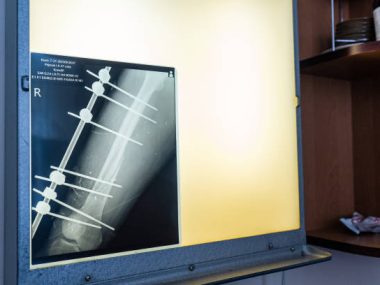Are hearing aids covered by insurance? The world of modern healthcare continually evolves to encompass a diverse range of medical needs, with an increasing emphasis on providing comprehensive care for individuals of all ages.
One essential aspect of healthcare that often goes under the radar is hearing health.
For those grappling with hearing loss, hearing aids can be transformative devices that enhance their quality of life by facilitating better communication and participation in daily activities.
However, a pertinent question arises: are hearing aids covered by insurance?
As medical technology advances and awareness about hearing health grows, individuals are seeking answers about the financial aspects of acquiring hearing aids.
The cost of hearing aids, along with associated services such as evaluations and fittings, can be a considerable concern for those in need.
Understanding the role that different types of insurance play in covering these costs is crucial for individuals and families striving to manage their healthcare expenses effectively.
This article delves into the complex landscape of hearing aid coverage by insurance.
In the following sections, we will delve into the diverse aspects of hearing aid coverage by insurance.
By gaining insight into these matters, individuals can make informed decisions about their hearing health, ensuring that they receive the support they need to lead fulfilling lives unburdened by the constraints of hearing loss.
Also Read:
How Do Insurance Companies Make Money?
How to Get Insurance to Pay for Roof Replacement
Are Hearing Aids Covered By Insurance?
Hearing aids play a crucial role in enhancing the quality of life for individuals with hearing loss, but their cost often poses a significant barrier.
The question of whether hearing aids are covered by insurance is of paramount importance in addressing this challenge.
The coverage landscape varies widely depending on the type of insurance and location.
Health insurance plans, including Medicare and private policies, may offer varying degrees of coverage for hearing aids.
While some plans provide partial coverage, others may exclude them altogether.
Medicaid, on the other hand, offers coverage in certain states, primarily for children.
Coverage eligibility hinges on factors such as medical necessity, age, and the specific insurance plan.
The Affordable Care Act has pushed for improved hearing health coverage, yet gaps persist.
Veterans and military personnel might find hearing aid coverage through specialized programs.
Despite progress, many individuals still face out-of-pocket expenses.
The evolving landscape of insurance regulations and advocacy efforts continues to shape coverage scenarios.
Navigating this terrain requires a comprehensive understanding of insurance policies, potential costs, and available alternatives, ensuring that individuals can access the hearing aids they need to lead enriched lives.
Factors Influencing Coverage Eligibility
Several factors intricately influence the eligibility for hearing aid coverage under insurance plans.
Primarily, the type of insurance—whether it’s private, Medicare, Medicaid, or employer-sponsored—determines coverage parameters.
Health insurance policies often require a demonstrated medical necessity, where hearing loss significantly impacts daily functioning or poses safety risks.
Age can also be a pivotal factor. While children might have better coverage options due to developmental needs, adults could face more stringent criteria.
Additionally, the specific nature of hearing loss, its severity, and potential alternatives like cochlear implants might sway coverage decisions.
Geographical location plays a role as well. Some states mandate coverage for children’s hearing aids under Medicaid, while others may not.
Moreover, insurance plans may be subject to state regulations, resulting in varying degrees of coverage based on residency.
Coverage limitations, such as annual caps or co-payment requirements, further affect eligibility.
Pre-existing conditions might complicate matters, potentially leading to exclusions or higher premiums.
Insurance providers’ individual policies and the broader regulatory environment contribute to the ever-evolving landscape of coverage eligibility.
Staying informed about these multifaceted considerations empowers individuals to advocate for their hearing health needs effectively within the framework of insurance coverage.
Exploring Alternative Financing Options
For individuals seeking hearing aids, exploring alternative financing options can be a practical strategy to overcome cost barriers.
While insurance coverage might not fully address expenses, there are avenues to consider.
Flexible spending accounts (FSAs) and health savings accounts (HSAs) present viable options.
FSAs allow pre-tax contributions for eligible medical expenses, while HSAs offer tax advantages for medical costs.
Both can cover hearing aids and related services.
Patient financing programs are another avenue. Many hearing healthcare providers offer installment plans or financing arrangements that spread out the cost over time.
These plans can alleviate the immediate financial burden of purchasing hearing aids.
Nonprofit organizations and charities may provide assistance to those in need.
These groups often aim to enhance accessibility to hearing healthcare by offering financial aid for hearing aids or connecting individuals with resources.
Furthermore, exploring refurbished or older-model hearing aids can lead to cost savings without compromising functionality.
However, thorough research and consultation with a hearing healthcare professional are essential to ensure compatibility with individual needs.
Overall, while insurance coverage might have limitations, alternative financing avenues can significantly ease the financial strain of acquiring hearing aids, making these critical devices more accessible to individuals seeking improved hearing health.
Also Read:
What Is Voluntary Life Insurance? (All You Should Know)
What Is Long-Term Care Insurance?
Conclusion
When it comes to hearing aid coverage by insurance, a complex interplay of factors determines access to these essential devices.
While progress has been made in expanding coverage through various insurance plans, eligibility criteria, age considerations, and specific coverage limitations remain pivotal.
Navigating this landscape requires a clear understanding of individual insurance policies, potential out-of-pocket costs, and available alternative financing options.
As advocacy efforts continue and healthcare regulations evolve, individuals are encouraged to stay informed and proactive in their pursuit of improved hearing health.
Ultimately, a balanced approach involving insurance coverage, alternative financing, and comprehensive awareness is key to ensuring equitable access to hearing aids for all who require them.







1 comment
I just wanted to take a moment to say how much I appreciate your blog posts. They’re always well-written, informative, and keep me coming back for more. Keep up the great work!